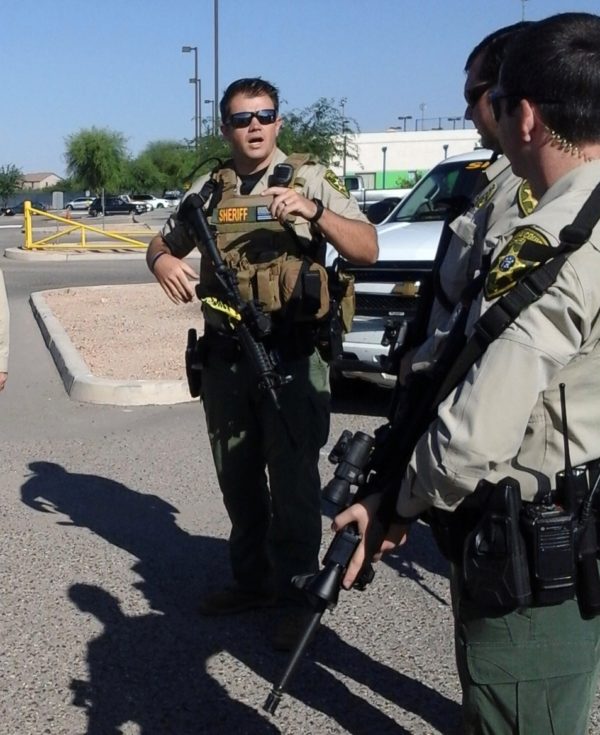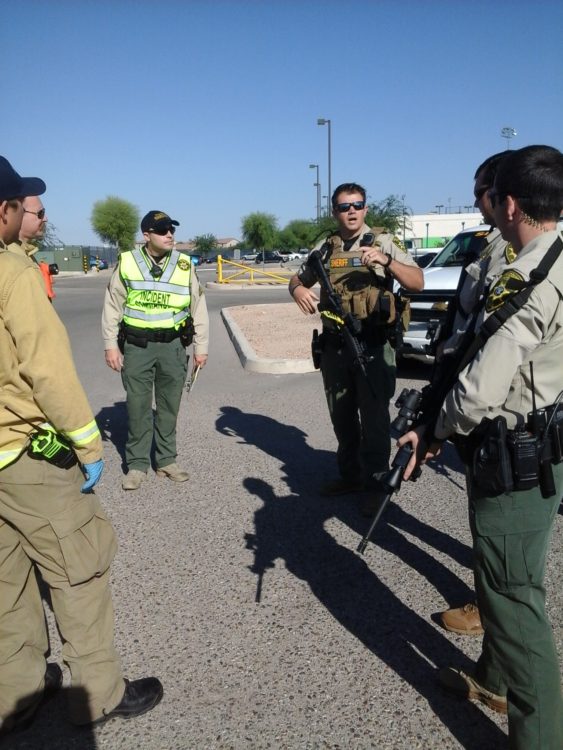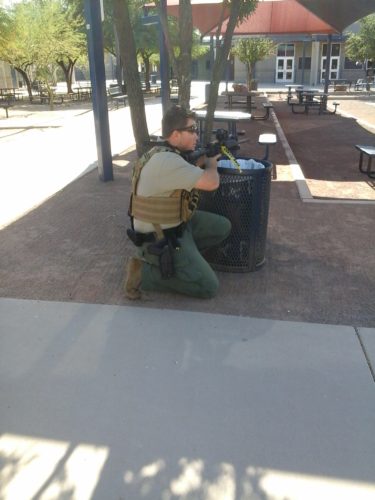The concept of visualization as a tool
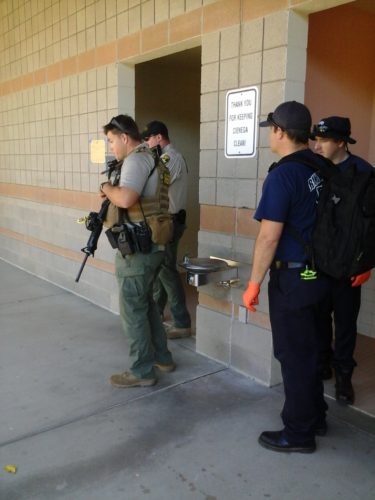
As a young law enforcement officer, fresh out of the academy and field training, driving around looking for pedestrian and motorist violations and waiting for calls, waiting for the “big call” to come out can be dreadful. You never know what to expect. More often than not, you have never been to the place where the call is coming from making it unfamiliar. You typically don’t know who you are going to have to deal with, making them dangerous.
Once the dust settles in your investigation, a scene has been rendered safe and now you transition into the investigatory realm, you don’t know where it will lead. When confronted with all of these unknowns as you’re driving to your call, you fall back on to your training. In the academy, we teach recruits to constantly play the “What if?” game. It is a very simple concept with a very beneficial and complex yield.
What is the “What if?” game?
The idea behind the “What if?” game is that while you’re on your way to the call you have been dispatched to, you constantly pose “What if?” scenarios. It could range from “What if when you arrive at the address for the call, a man is set to ambush you? Are you going to engage the man or put the car in reverse and get out of there?” to “What if you arrive on scene and a medical situation arises?”.
There are one hundred million situations that could arise between these two situations but the objective is still formulating a baseline response in your neural pathways in an effort to overcome your sympathetic reflex (fight, flight or freeze).
The odds are against you being able to visualize the exact scenario that you have found yourself in but even if you have envisioned one in the neighborhood of your actual situation, you may have formulated a response that is appropriate and applicable to your real life scenario.
That’s great for cops, but what about me?
What this looks like in the realm of anyone who is not in law enforcement could be, you walk into a theater with your loved ones. As you are walking up the stairs to wherever you end up sitting, you scan the room, observing the people who are in the theater with you. You also take note of where the exits are and what type of cover and concealment are available. If you are anything like me, you showed up early because you really enjoy the previews.
As you sit in your theater and movie goer after movie goer fills in, you begin to ask yourself questions along the line of, “What if one of these folks stood up and produced a firearm?”, “What if the screen caught fire?” or “What if I heard gun shots coming from the hallway of the theater?”. This allows your brain to start coming up with potential routes of evacuation, or objects within the theater that would provide you the opportunity to hunker down and appear invisible. If you are armed, you may visualize engagement opportunities or fields of fire.
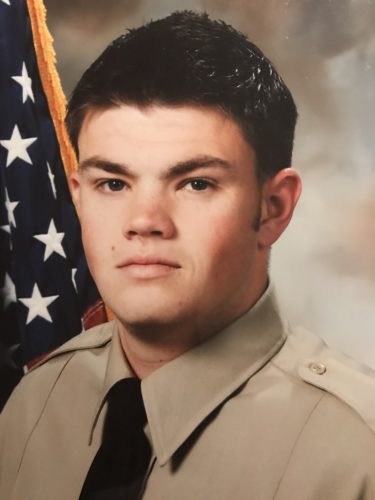
Trust your training, not your instincts.
Sympathetic reflexes can be dangerous. The average layperson has never found themselves confronted with a lethal threat and all of the stressors and adrenaline associated with it. It is not uncommon to respond to a lethal shooting event and finding a victim or suspect who has been shot through the hand or arm prior to the projectile entering another part of their body. This can be an example of the sympathetic reflex to put your hands up towards something that your brain calculates is a threat to your safety. Hands provide exactly zero ballistic protection. In this instance, the sympathetic reflex did nothing to help this person survive this particular situation. The use of the “What if?” game may have provided a better opportunity for this person to survive this encounter.
“What if?” an example.
As a detective with about 8 years on, I was following up on a shooting and had gone to another city to locate several suspects. I had a Corporal from that local department assigned to help me. While I was booking one of my suspects into their jail, another inmate (not mine) started causing a ruckus. He was banging on the walls and trying to fight other inmates. The Corporal went to address the situation. I don’t let people address situations alone if I have the option so I went with him.
While I was walking towards the inmate, I began to visualize what it was going to look like if we ended up fighting this inmate among these other inmates. I decide if he escalated to physical violence, I would take him to the ground quickly and try to get the door shut. We get to the cell and open it, commanding the rabble rouser to turn around and put his hands behind his back. He turns around and as we get close enough to put handcuffs on him, he spins and swings at me.
I’m able to block his punch by stepping inside of it. I then grab his arm and shoulder and throw him to the ground, there is enough momentum and force at work that we end up out of the cell. I turn and slam the door shut, pin him and cuff him up. If I had walked in there with the attitude that “he’s going to cuff up, they all cuff up”, it’s likely that I would’ve been punched right in my face and exposed to whatever else any of the other inmates wanted to do. The process of mating visualization with good situational awareness works to maximize our safety.
The “What if?” game’s long time use in the law enforcement world has proven to be advantageous to surviving and thriving in stressful situations. Borrowing this tool from law enforcement and implementing it into your own processes of situational awareness could prove to increase your own odds of being successful and/or surviving in stressful and lethal scenarios.
*The views and opinions expressed on this website are solely those of the original authors and contributors. These views and opinions do not necessarily represent those of Spotter Up Magazine, the administrative staff, and/or any/all contributors to this site.
